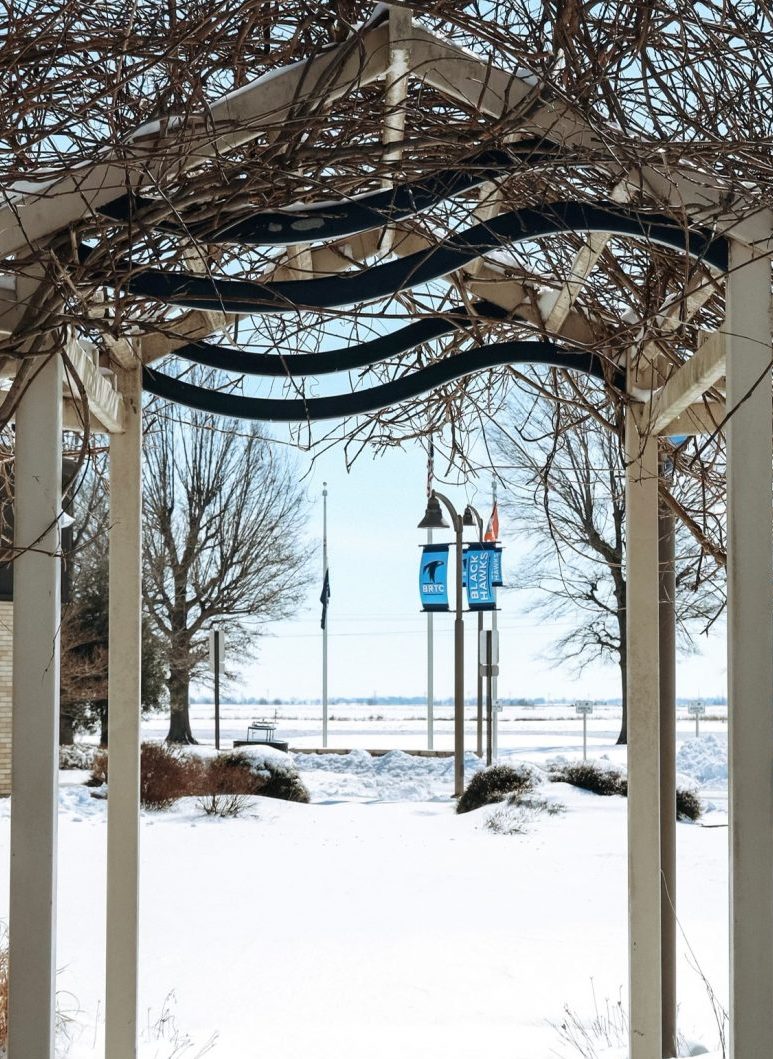Mission
Black River Technical College transforms lives through quality academic and career education to enhance the community we serve.
Vision
BRTC will lead our community in learning and economic development
Values
- Quality – At Black River, we strive to provide our students with excellent academic programs, encouraging support services, and administrative support to meet students’ goals.
- Learning – We provide degree programs, professional training, enrichment experiences, and collaborative opportunities to foster career and personal improvement.
- Students – Students’ needs are the foundation of our academic, co-curricular, and financial planning.
- Community Relationships – The strengths and challenges of our community shape us. We collaborate with our community to share strengths and resources, learn together, and address the needs of our region.

Founded as Black River Vocational Technical School in 1971, the school is a public, 2-year college with an open admissions policy and committed to meeting the technical, academic, professional, cultural, and personal enrichment needs of the citizens of Northeast Arkansas and Southeast Missouri. It had an initial enrollment of 38 students in 6 programs when it opened its doors on February 26, 1973.
The college was renamed Black River Technical College in 1991 and is governed by a Board of Trustees. Black River Technical College annually enrolls approximately 2,500 students.
In 1995, the City of Paragould invited BRTC to offer classes there.
BRTC faculty share a devotion to their diverse disciplines and programs and a commitment to the intellectual, technical, and professional growth of their students. The typically small student-faculty ratio permits students to have a productive learning relationship with their instructors.
Strategic Plans
Goal 1: To foster an atmosphere wherein learning, working, and serving are recognized as exemplary by internal and external stakeholders.
- Objective 1.1 Achieve sustainability and effective stewardship of resources to strengthen the college’s financial position and infrastructure.
- Objective 1.2 Encourage a culture of community through mutual communication, transparency, and growth.
- Objective 1.3 Continue to build a culture of evidence for quality assurance.
- Objective 1.4 Advance a culture of continuous improvement.
Goal 2: To prepare students for further education while serving as a signature institution for general and technical education in the region and state, including unique credit and non-credit programs designed to meet university or employment needs with a focus on high-demand and future-oriented programs.
- Objective 2.1 Expand online and on-campus course, certificate, and/or degree offerings across various disciplines.
- Objective 2.2 Refine the relevance and quality general and technical education to prepare students to pursue lifelong learning.
- Objective 2.3 Achieve 100% job placement for graduates.
- Objective 2.4 Maintain and increase viability of current programs for industry and educational needs.
Goal 3: To achieve slow, sustained enrollment growth and increased retention over the next five years.
- Objective 3.1 Create and implement professional development for all advisors.
- Objective 3.2 Maximize capacity of all locations in the Career and Technical Center.
- Objective 3.3 Provide a robust lineup of student activities without increasing the cost to students.
- Objective 3.4 Increase alignment with school districts to encourage early interest.
- Objective 3.5 Increase awareness of student support services.
Goal 4: To geographically expand marketing presence, strategic partnerships, and fundraising in support of the College’s communities, programs, and projects.
- Objective 4.1 Market BRTC within our region of the United States.
- Objective 4.2 Work with service area communities to increase space for events, activities, and educational programs.
- Objective 4.3 Build relationships and identify additional resources to support BRTC students, programs, and projects.
Goal 1: Manage enrollment responsibly and ensure student success
- Objective 1.1: Increase total fall headcount to 2150 by Fall 2020
- Objective 1.2: Increase fall non-traditional headcount to 812 by Fall 2020
- Objective 1.3: Increase the number of students who are career-ready
- Objective 1.4: Increase full-time retention rate to 60%
- Objective 1.5: Increase the completion rate by an average of 0.25% per year
Goal 2: Clarify the identity of the college through heightened brand awareness, focused educational programs, and effective communication
- Objective 2.1: Increase awareness of the college and its brand throughout the region
- Objective 2.2: Evaluate the marketability and cost-effectiveness of educational programs
- Objective 2.3: Increase the effectiveness of internal communications
Goal 3: Exercise regional leadership through strategic partnerships and educational opportunities
- Objective 3.1: Increase partnerships with business and industry
- Objective 3.2: Increase student internship opportunities through business and industry partnerships
- Objective 3.3: Strategically increase BRTC involvement in community organizations
- Objective 3.4: Increase fundraising by identifying and connecting with community supporters and donors
Goal 4: Create a culture of evidence to facilitate continuous improvement
- Objective 4.1: Evaluate and enhance data collection for accountability and continuous improvement
- Objective 4.2: Make data easier to access and use for college decision-makers
- Objective 4.3: Preserve institutional memory by developing and implementing consistent and standardized documentation processes
Downloads
Administration Contacts

B.S.E., Williams Baptist University; M.S.E., Arkansas State University; Ph.D., University of Arkansas

Baine, Dr. Brad

B.S., Williams Baptist College

Edington, Julie

B.S., University of Central Arkansas; M.S., University of Arkansas at Little Rock; PhD, University of Arkansas at Little Rock

Eggensperger, Dr. Martin

B.A., M.A., English, Arkansas State University; Ed.D., Adult and Lifelong Learning, University of Arkansas

Liebhaber, Dr. Karen Powers

B.S. , Arkansas State University; J.D., University of Arkansas at Little Rock School of Law

Smith, Jason

B.S.E., M.A., M.S.E., Arkansas State University, Title IX Deputy Coordinator

